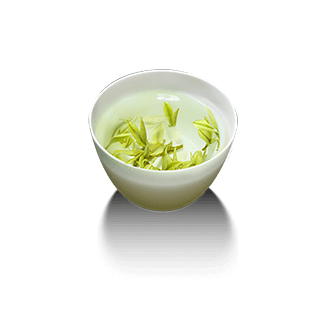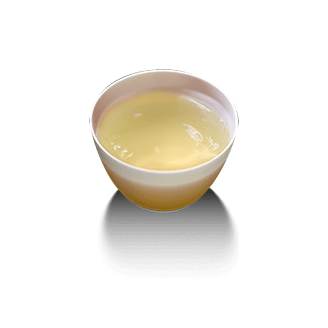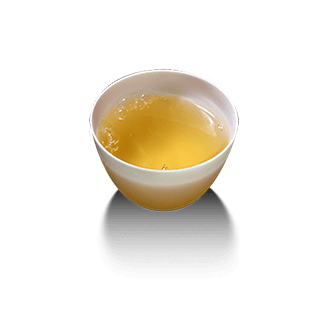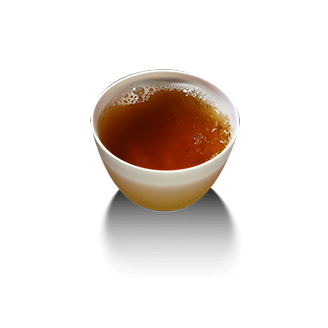
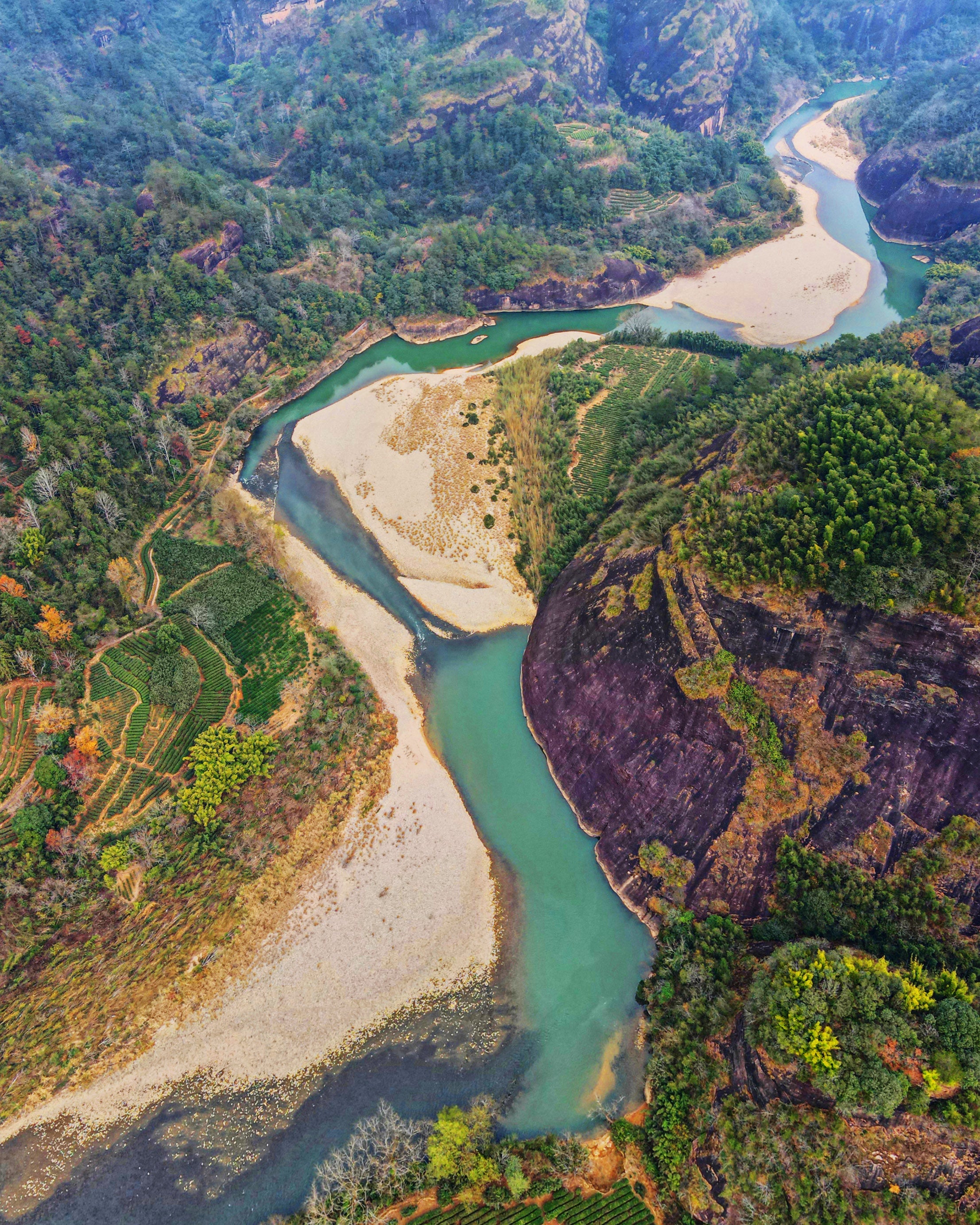

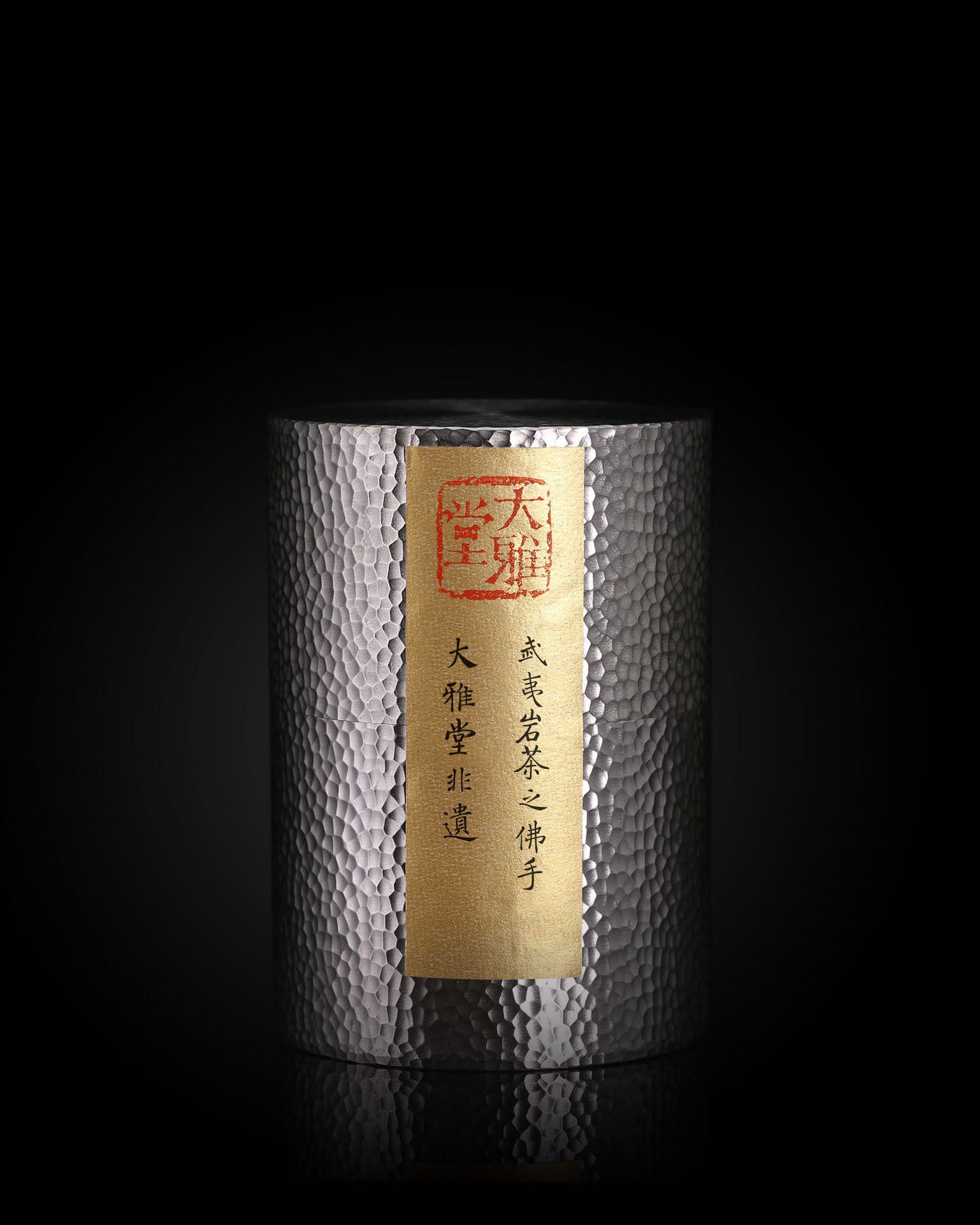
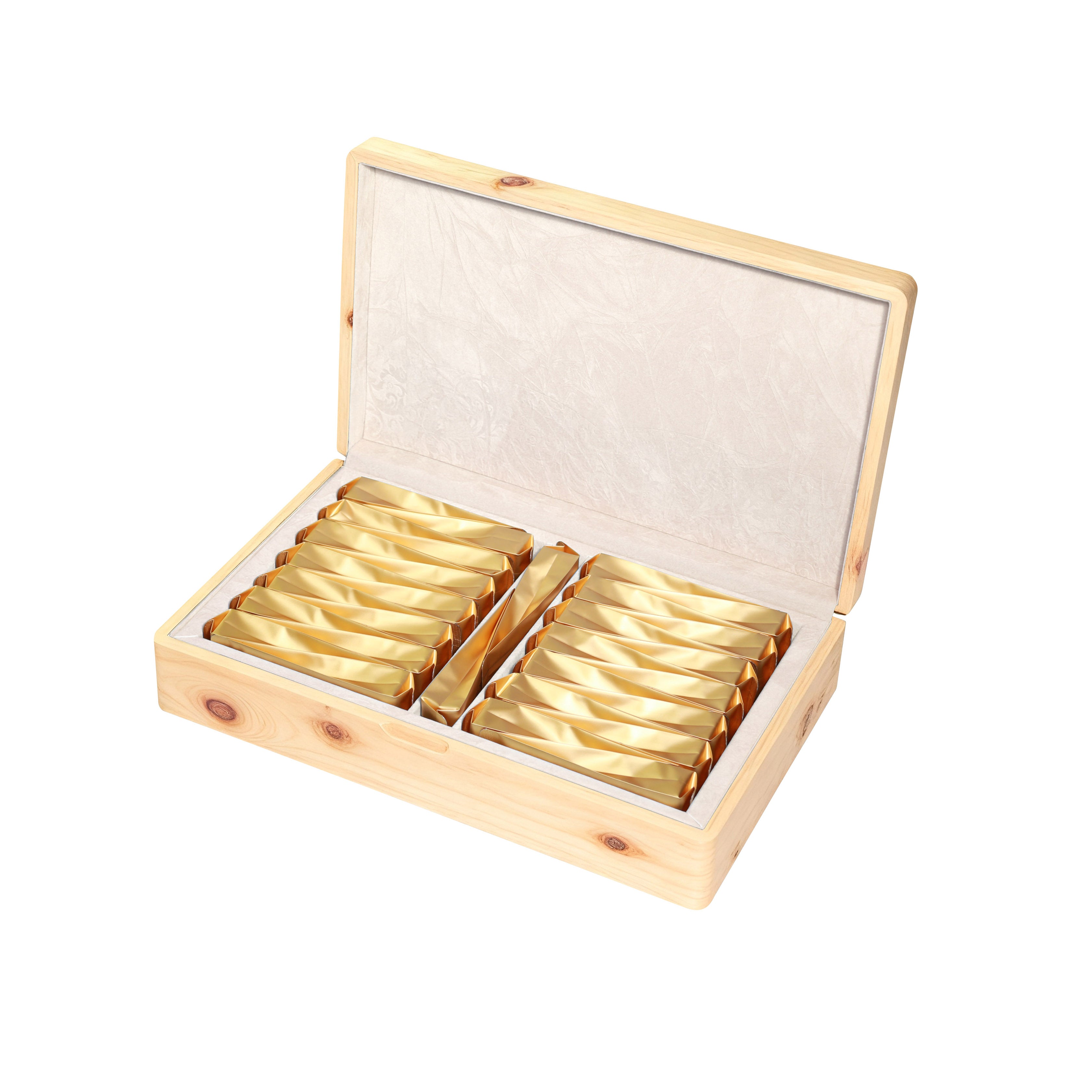
Wuyi Foshou Tea, Xingcun Baisuixiang Tea






Wuyi Foshou Tea, Xingcun Baisuixiang Tea
Zen Tea Aroma, Foshou Charm

In late spring, Master of Dayatang searched for Buddha's Hand Tea's origin and visited Shifengyan Ancient Temple in Yongchun. An old tea tree with twisted branches and palm-sized leaves stood by the temple steps, releasing a faint citrus scent in the wind. Monks presented an old tablet rubbing, with faint words: "Tea planted in Song Dynasty, used as an elegant desk offering" – telling the tree's story.
As early as the Song Dynasty, it was known as "Yongchun Foshou Zen Tea" — not only a touch of green elegance admired by literati on their desks, but also a meditative brew for monks to calm their minds. In the 29th year of the Kangxi reign in the Qing Dynasty, an elderly monk here observed its leaf shape and smelled its fresh fragrance, thus naming it "Foshou" (Buddha's Hand). Four years later, it was introduced to Shifeng, Dapu in Yongchun, and since then, the charm of this Zen tea has lingered in the landscapes of southern Fujian for hundreds of years without fading. Later, it took root in places like Shuilian Cave, Yingzuiyan (Eagle's Beak Rock), and Huiyuan in Wuyi Mountain, becoming a famous Wuyi Rock Tea variety.
Yongchun, the native land of Foshou tea, witnesses a bustling tea picking period

Kang Zhiliang,ICH inheritor of Yongchun Foshou Zen Tea, is making Foshou Zen Tea

Shifengyan Ancient Temple in Yongchun, the birthplace of Foshou Tea
Then I went to Wuyi Mountain, stopping around Shuilian Cave, Huiyuankeng and Yingzuiyan. The gravelly soil here is breathable and fertile, with mountain mists lingering all day — perfect for Foshou Tea’s nature. Coincidentally, my old friend Teacher Liu was making the tea, and I was delighted. In his tea hut, I warmed the cups, added tea leaves, and poured boiling water high. The aroma filled the air at once: initially sweet like pear moistened by morning dew, then with Zheng Yan’s unique terroir — mild and gentle, as if holding a spring pear orchard in a cup. The fragrance blends into the soup, offering refreshing pear-like sweetness and a long aftertaste. Master Daya smiled: “This tea is great to carry. Brew a cup at your desk on an ordinary afternoon, and it’ll wash away your troubles.”
In early autumn, I visited Xingcun again and tasted several high-aroma Wuyi Rock Teas at Mr. Tang’s, who excels at slow roasting over gentle fire.
Slow-roasted gently, the tea yields an amber-clear liquor. Though famous for its intense aroma, it truly achieves "fragrance within flavor, flavor within fragrance." The renowned Baisuixiang from Xingcun, after slow gentle roasting, has an amber hue. As raw tea, it had a strong but mixed with greenish aroma — luckily, Master Daya spotted its potential. After another four days of slow roasting and ten days of resting, it finally became a fine tea. When served, Master Daya took just one sip and couldn’t help clapping his hands; one cup brought joy to everyone present. Such careful refinement truly lives up to the name "Baisuixiang"!
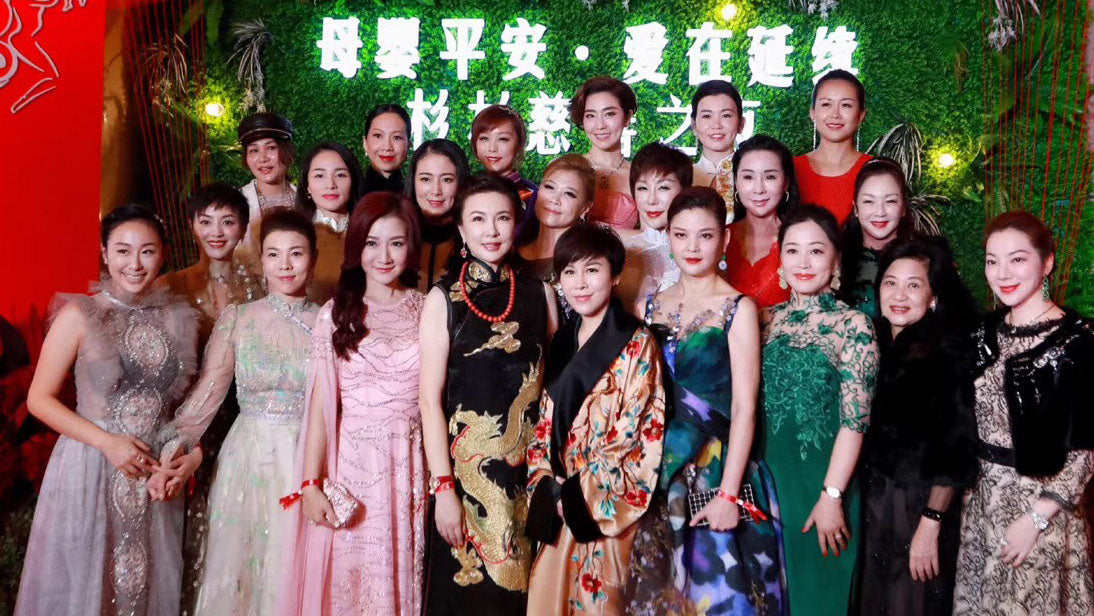
The value of Xingcun Baisuixiang radiates warm light beyond the teacup — this rock rhyme of "fragrance within flavor" once, mediated by love, entered the "Shanshan Night" Charity Auction at The Peninsula Shanghai on November 30, 2017, lending support to the "Mother and Child Safety" project of the Soong Ching Ling Foundation.

For this charitable initiative, Dayatang specially donated the Master’s private collection of Xingcun "Baisuixiang" — paired with its Gongfu black tea "Red Rose," a variety holding the "National Plant Variety Right Certificate of China." The teas were housed in a red sandalwood carved collection box, adorned with intricate interlocking swastika patterns. When the auction hammer fell, this carefully selected tea set sold for 450,000 yuan. The rock bone and fragrance in the tea soup gained an added depth of "priceless love."
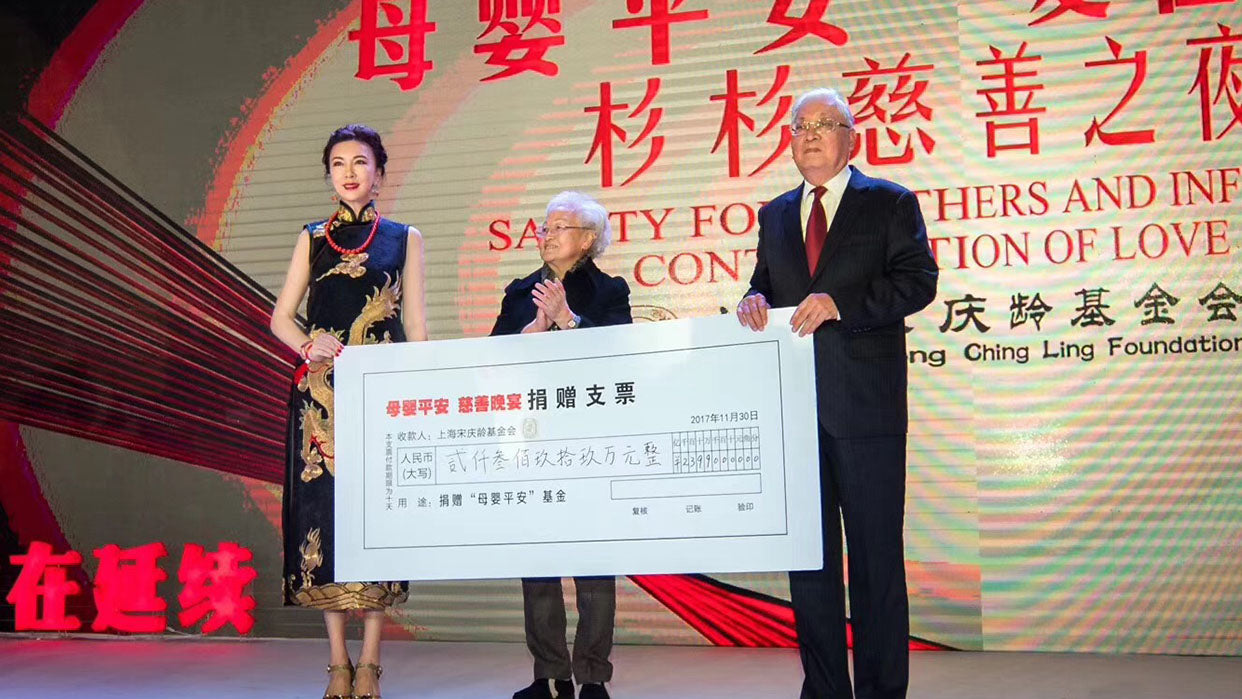
Nov 30, 2017: Dayatang Baisuixiang tea & Red Rose tea at Shanshan Night Charity Auction (The Peninsula Shanghai)
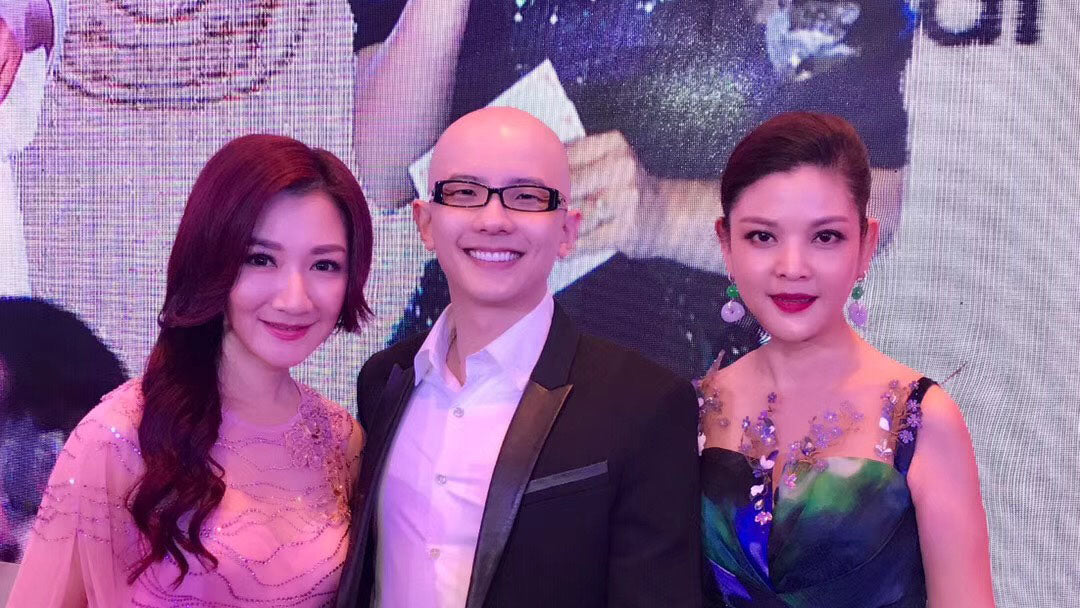
On November 30, 2017, the "Centenarian Fragrance" and "Red Rose" from Dayatang were featured in the "Shanshan Night" charity auction at the Peninsula Hotel Shanghai.
Baisuixiang Tea
Appreciation
Top-grade Baisuixiang is a core renowned variety of Wuyi Rock Tea, nurtured by Zheng Yan (core rock tea-producing area) terroir and refined through slow roasting over gentle fire.
The dry tea leaves are tight, compact and dark glossy, with subtle "toad skin" (roasting marks) visible;
The aroma bursts forth when the soup is cooked , a blend of floral sweetness and creamy notes, with a lingering fragrance at the bottom of the cup.
The tea liquor is amber and translucent , with dense legs clinging to the cup wall; it tastes mellow and smooth on the palate, with distinct rock rhyme and a lingering sweet aftertaste.
The infused leaves are a uniform bright yellow-green , flexible and elastic, and can withstand 10+ infusions.
Its fragrance is intertwined with flavor, and its flavor is infused with fragrance , fully reflects the scarce value of a renowned Zheng Yan variety.
Wuyi Foshou Tea
Appreciation
Wuyi Rock Tea Foshou is known for "leaves shaped like Buddha’s hands and aroma similar to snow pears." It is an elegant fusion of the ancient Yongchun Zen Tea variety and the terroir of Wuyi Zheng Yan (core rock tea-producing area). Since Foshou was introduced to key regions like Shuilian Cave and Huiyuankeng in Wuyi Mountain, it has been domesticated through traditional Rock Tea craftsmanship, ultimately becoming a top-tier tea that combines the "pure charm of Zen Tea" and the "rock bone character of Wuyi Rock Tea."
Year: 2025
Grade: Premium Grade
Producer: Dayatang
Origin: Core Zheng Yan Area, Wuyi Mountain
Variety: Foshou (a distinctive high-aroma variety of Wuyi Rock Tea)
I. Dry Tea
Tea Strip Shape: Plump and compact, presenting a slightly curved "shoulder pole shape." Due to the native leaves being as large as palms, the tea strips still appear stretched without crumbs or broken pieces — a result of the strict "half-open leaf picking" standard that preserves the integrity of the leaves' inner qualities.
Color: Dark brown and glossy, with subtle golden fuzz visible. Fine "toad skin" (formed by light roasting) can be seen, with an even color and no burnt spots — precise control of light roasting not only showcases the calmness of Wuyi Rock Tea but also reveals the freshness of the tea's nature.
Texture: Firm and elastic when twisted by hand. A faint "pear-like sweet aroma" is detectable when sniffed gently, mixed with the earthy scent of Wuyi's soil. No raw greenness or heavy smoke smell, initially showing a pure and moist base character.
II. Aroma
"Snow pear aroma" is the soul of Foshou, unfolding layer by layer with each brew:
1. Dry Sniff & Warm Cup Aroma: : Dry tea exudes the freshness of freshly picked snow pears. After warming the cup, the pear aroma becomes more vivid, mixed with a hint of elegant orchid scent — the Wuyi rock rhyme keeps the pear aroma from being frivolous or cloying.
2. Brewing Aroma: When boiling water is poured at a high height, the sweet pear aroma bursts forth first. After a short while, lifting the lid reveals the rock milk aroma (warm and moist like damp rock) from Huiyuankeng or Shuilian Cave. The two blend into a complex aroma with "pear aroma as the soul and rock aroma as the backbone" — a result of the low-light and high-humidity climate in Wuyi Mountain, where terpenoids in tea trees fuse with pear-scented substances.
3. Cup Bottom Aroma: After tasting, the pear aroma remains distinct at the bottom of the cup, mixed with a faint honeyed sweetness. It stays elegant even after standing for 5 minutes — a sign of abundant inner qualities and the effect of light roasting in "retaining aroma and protecting charm."
III. Tea Liquor Color
Tea liquor color: Pale orange-yellow and translucent, with a delicate golden rim glowing in white porcelain cups. No turbidity or sediment — light roasting preserves the tea pigments, maintaining the freshness of Foshou.
Texture: The liquor flows smoothly like rice soup, clinging evenly to the cup wall without sliding off — the rich inner qualities nurtured by Wuyi's gravelly rock soil give the tea liquor a dense yet clear consistency.
IV.Taste
The taste strikes a balance between "pure moisture" and "rock rhyme":
Initial Sip: Pear sweetness unfolds on the tongue — no bitterness or astringency, only a sense of "moisture." Soon after, the rock rhyme emerges. Unlike the sharp spiciness of Rougui or the richness of Shui Xian, it carries a coolness like damp rock, adding depth to the sweet freshness.
Sweet Aftertaste & Throat Charm: 3-5 seconds after swallowing, the pear-like sweet aftertaste spreads to the throat, with a long-lasting cool sensation. This comes from the minerals and amino acids of the tea-growing area, reflecting its strong aftertaste.
Brewing Durability: Able to withstand up to 10 steepings. The first 3 brews highlight intense pear aroma with light rock rhyme; brews 4-8 see the rock rhyme gradually intensify while the pear aroma turns into honeyed sweetness; the final brews remain sweet without tasting bland.
V. Infused Leaves
Infused leaves are a testament to terroir and craftsmanship, confirming Foshou’s fine origin:
Color: Yellowish-green and uniformly bright, with pale "red edges on green leaves" (a characteristic of oolong tea processing) along the leaf margins. The red edges are even without scorching or wilting — a result of moderate leaf oxidation, which preserves aroma transformation and leaf freshness.
Leaf shape and texture: Leaves are broad, thick, and palm-shaped (echoing the tea’s name), with plump and elastic leaf flesh. The low-light environment of core tea-growing areas extends the tea trees’ growth cycle, making the leaf flesh thicker than that of ordinary Foshou varieties.
Uniformity: Leaves are consistent in size, with no mixing of old and tender foliage — a reflection of strict standardized picking practices.
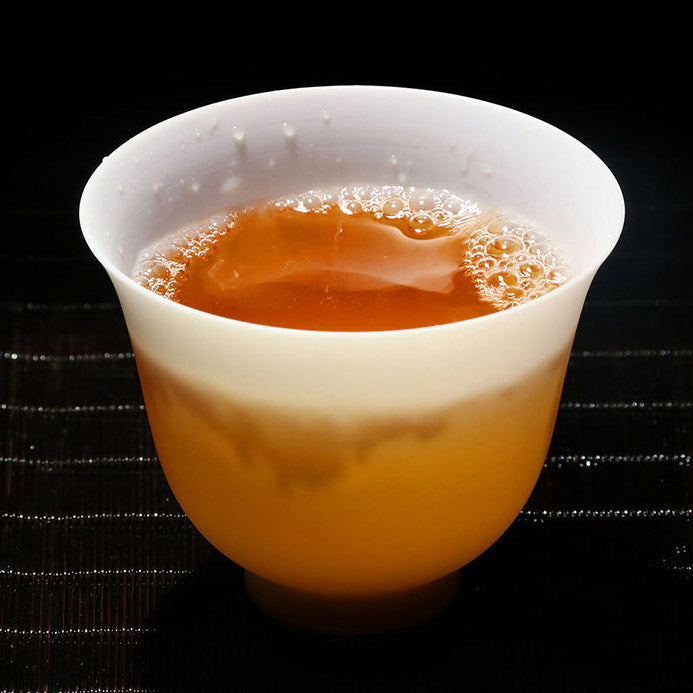
Foshou Tea yields an amber liquor with a golden rim that reflects its quality

Foshou Tea
Foshou Tea , Baisuixiang Tea
Brewing
spare parts
- Teaware : Gaiwan (preferred by locals for easy observation of tea liquor color and infused leaves) or purple clay teapot (for aroma concentration). Recommended capacity: 100-150ml.
- Water source : Use only purified water; avoid mineral water and tap water.
- Water temperature : 100℃ boiling water (Oolong tea requires high temperature to bring out its aroma).
- Tea leaves : Take 8-10g of dry tea leaves (about 1/3 to 1/2 of the container, adjust according to personal taste).
Warming and Cleaning the Ware
Rinse the teaware with boiling water to raise the temperature of the teapot/bowl and prevent the tea from cooling down and affecting its flavor.
Adding and Awakening the Tea
Put the dry tea into the pre-warmed teapot, shake it gently, and smell the dry tea aroma (such as the caramel, floral, or fruity notes of Wuyi Rock Tea). This step is called "shaking to release aroma."
brewing
First infusion: Do not blindly follow the "tea washing" practice — the first brew is actually the essence! Pour boiling water and pour out the tea liquor immediately (about 10 seconds) to avoid bitterness from over-steeping.
From the second infusion onwards: Extend each steeping time by 5-10 seconds (adjust according to the tea liquor concentration).
After the fourth infusion,Appropriately increase the steeping time. Key techniques: Pour water from a high height to let the water flow impact the bottom of the tea leaves and stimulate aroma; drain the tea liquor completely when serving to avoid prolonged steeping.
Tasting
Pour the brewed tea liquor into a fair cup, then distribute it into small teacups. First, smell the aroma (including the lid aroma and the lingering aroma on the cup walls). Next, observe the tea liquor color — amber for tea roasted at low to medium temperature, and red wine color for tea roasted at medium temperature or aged tea. Finally, sip slowly to experience the "rock rhyme" (the richness, sweet aftertaste, and throat charm of the tea liquor).
Key points
1: Never blindly follow the "tea washing" practice. The first brew is truly the essence, hailed by tea connoisseurs as the "reviving brew."
2: Water is the paramount priority.
Choose Qualified purified water; never use alkaline water.
(For commercially available mineral water brands, their water sources and quality indicators vary. So-called "high-quality mineral water and mountain spring water" may cause loss of functional components and inhibition of aroma in tea.)
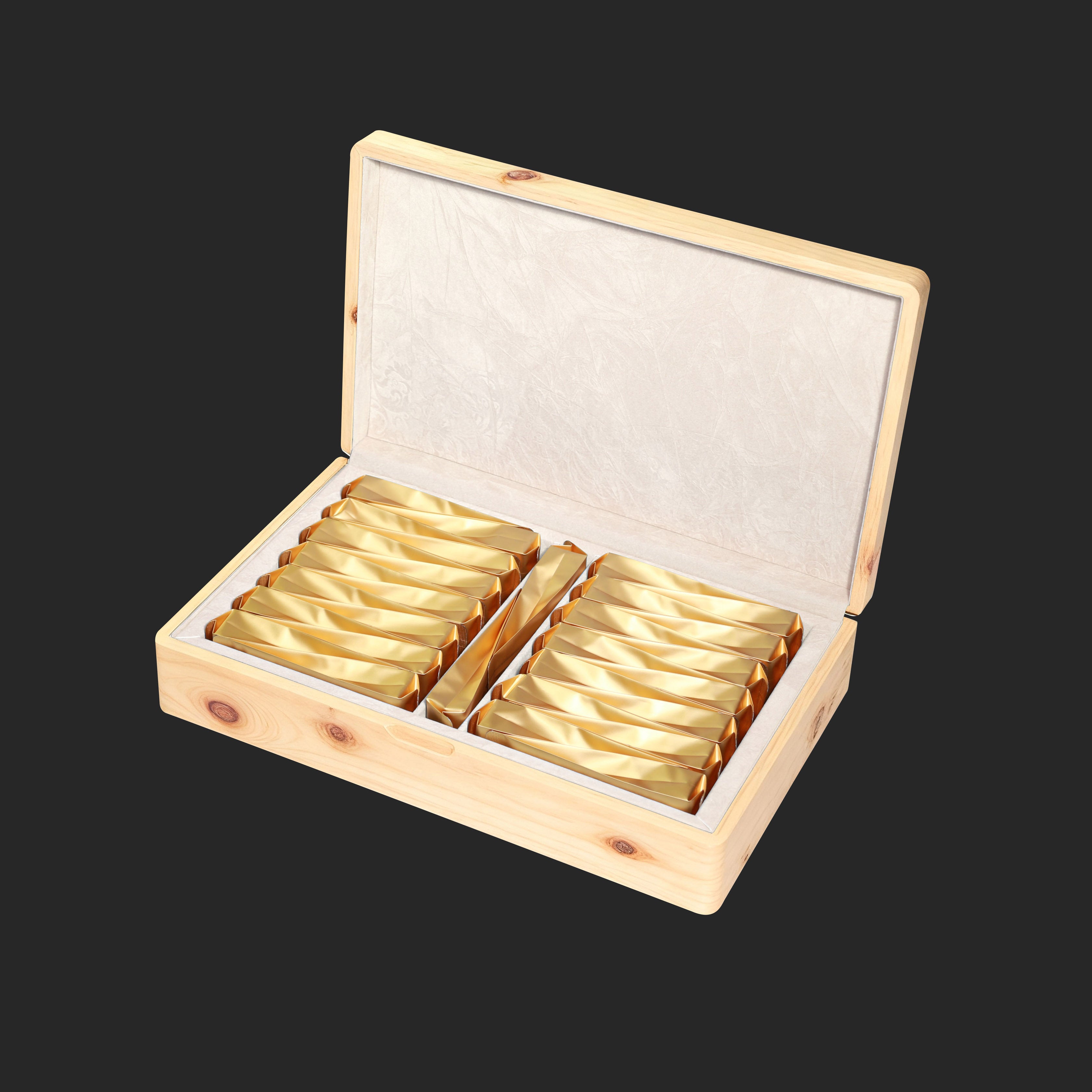
Pouch packaging: Blocks oxygen, light, moisture. Preserves original aroma, nutrients. Longer shelf life.
Storage

Stable, dry, light-proof and odor-free






